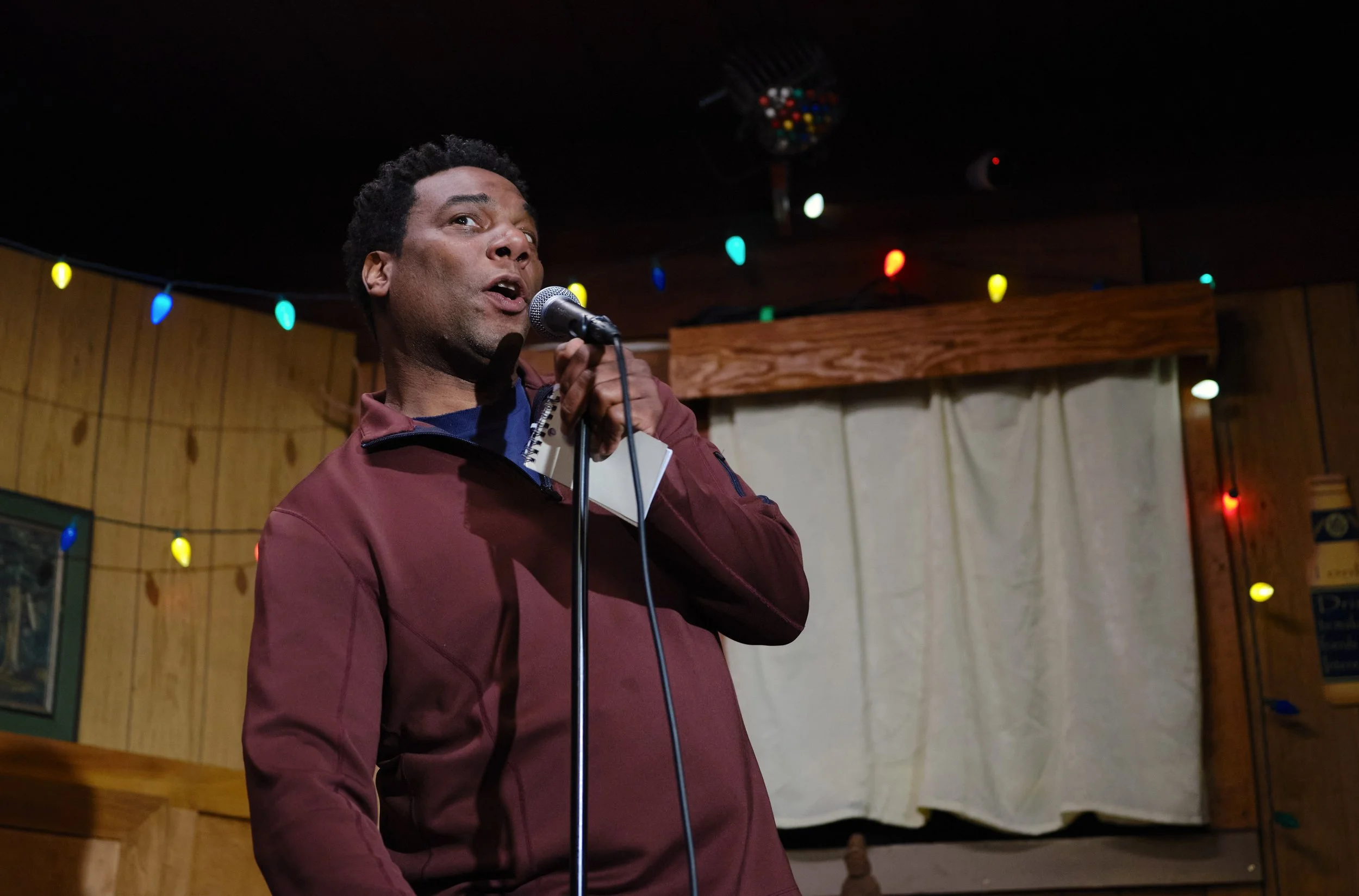ZY: What was the inspiration for your latest film, Marcie's?
JH: This is the third fiction feature I've done and it's the third one I've done where I cast the key actors first and we all agree to go through a six month or so improvisation period where they're actually creating their character with my help and input. Then they meet in improvisation. We kind of move through time to create a backstory and history for these characters.
The spark really comes from Jenn [Ruzumna], who plays Marcie, developing this character who grows up in a small town turning suburban outside of Seattle with a lot of family pressures and troubles. The character kind of found her voice or spark being a bartender at this tavern and helping to build that community there. I liked that as it started to grow. It was a good place to bring in other actors because who knows who's going to walk into a bar.
Reggie Jackson was developing a character who was a karaoke host so I found a way to bring him into Marcie's bar even though he was technically working in Seattle. He went out to do a gig there and they developed a friendship and got pulled into that community. This was a venue where unexpected things can happen.
ZY: Did you have any kind of outline before the improvisation or did you just want to see what happened?
JH: No, I didn't have an outline for the story. That's the thing, it's an incredible leap of faith on the actor's part. They knew this going into it that they were going to build these characters where we don't know what's going to happen or what the story's going to be. As it developed, a couple months into the process, I started to have ideas about what this film could really be.
I was personally drawn to this idea of community as well because it's something that's been on my mind. Where do people meet and gather? The theme of isolation versus connectedness in the times we live in where we're incredibly connected, but ironically we're all sort of isolated by devices at the same time. Where are those places where authentic connection happens? So I was inspired by that and sort of in the back of my head I was carrying an interest in habitat and what are the disappearing places within nature as developments and cities grow bigger and bigger.
Seeing that around [Seattle] and the country and the world was in the back of my mind, so that's when I brought in the idea of an endangered species hanging out near the bar. I started to see the parallels between these community gathering spaces or independent businesses that are also threatened by growth and development. I began to work with that and came up with the idea of a developer coming in. There was a need for her [Marcie] to bump up against an obstacle so the development seemed to fit all those themes.
ZY: Do you find that editing the film yourself is a way to make sure all of those plot threads come together?
JH: I think working as a director this way, particularly with improvisation, draws on editing work. I like to open the hopper wide at the beginning. That's the idea I love about improvisation. Let's see what we come up with. Let's see where this idea goes. [It's] opening the door to unexpected moments. But a movie has certain strictures and audience expectations, so the story gets crafted in multiple places in the writing and in the directing. We're not learning it from the ground up. We've been there and it's comfortable. We know how to talk about these characters.
I really love to edit my own work. Especially this where I've been in that world with the actors for so long I'm just so attuned to them. We had to make some choices where some scenes didn't make it into the final movie for length or it didn't feel important or in the flow anymore.
ZY: I can imagine you have a whole hard drive of just the open mic scenes.
JH: [Laughs] Exactly! That was a place where we let it rip and see what happens.

